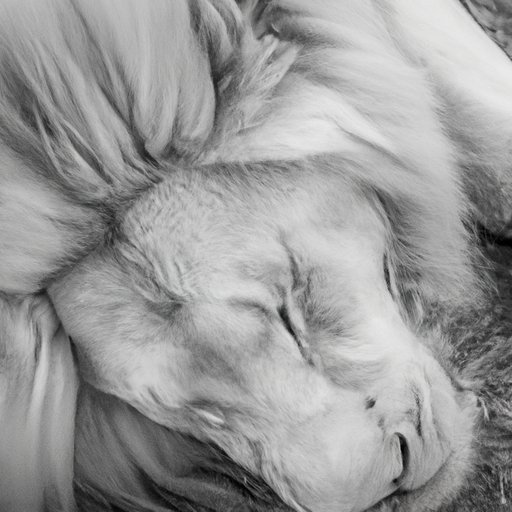Introduction
The African lion is one of the most iconic animals in the world. Despite its strong presence in popular culture, the number of African lions in the wild has decreased significantly over the last century. According to the Lion Recovery Fund, there are fewer than 20,000 African lions left in the wild today. This number is drastically lower than the estimated 200,000 that roamed the continent at the start of the 20th century. The purpose of this article is to explore the current state of the global lion population and provide an overview of the factors impacting their numbers.
Assessing the Impact of Human Activity on Lions
Human activity is one of the primary causes of the decreasing lion population. The destruction of their habitats due to development and agriculture is a major factor in the decline of the species. As humans expand into areas that were previously occupied by lions, they are forced to move to different regions in search of food and shelter. This displacement can cause tension between humans and lions as they compete for resources. In addition, human-caused hunting and poaching of lions has also contributed to their declining numbers.

Conservation Efforts to Increase the Lion Population
In order to reverse the trend of decreasing lion populations, conservationists have implemented a number of strategies. Reintroduction programs have been used to return lions to their natural habitats. These programs involve transporting lions from captivity to suitable habitats where they can reestablish their populations. In addition, protecting existing habitats is essential to keeping lion populations healthy. This includes preserving land from development, enforcing anti-poaching laws and creating buffer zones between humans and lions.
Education and awareness campaigns are also important in helping to increase lion populations. By educating people on the importance of preserving lion habitats and discouraging illegal hunting, we can help create a more positive environment for the species.
Examining the Impact of Poaching on Lions
Poaching is another major threat to lions. Poachers hunt lions for their fur, body parts and even for sport. This illegal practice has had a devastating impact on lion populations, as it reduces the availability of prey and puts pressure on the species. In addition, poachers often use traps and snares which can injure or kill lions. To reduce poaching, governments must implement stricter regulations and enforcement measures.

The Role of Zoos in Supporting the Lion Population
Zoos play an important role in supporting the global lion population. By maintaining captive breeding programs, zoos can help ensure the survival of the species. In addition, many zoos are involved in conservation efforts, such as reintroducing lions to the wild and providing education and awareness campaigns. However, there are some challenges associated with keeping lions in captivity. For example, keeping them in small enclosures can lead to stress and health issues.

Exploring the Relationship Between Lions and Their Environment
Lions and their environment are inextricably linked. Changes in the environment, such as deforestation and climate change, can have a devastating effect on lion populations. Deforestation reduces the amount of habitat available for lions, while climate change can alter their food sources and cause extreme weather events. In order to protect lion populations, it is important to preserve their habitats and address the root causes of climate change.
Conclusion
The global lion population has declined significantly over the past century due to human-caused habitat destruction, hunting and poaching. Conservation efforts such as reintroduction programs and protection of existing habitats are helping to increase the numbers of lions in the wild. Poaching is still a threat to the species, and zoos are playing an important role in ensuring the survival of the species. Finally, it is essential to preserve lion habitats and address the root causes of climate change in order to protect the species.
In conclusion, while the current state of the global lion population is concerning, there are a number of strategies that can be implemented to help protect and increase the numbers of lions in the wild. It is up to us to take action and ensure that these majestic animals continue to thrive for generations to come.


